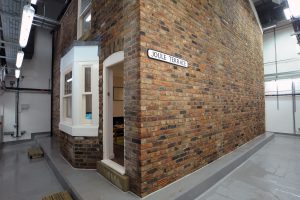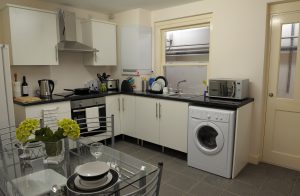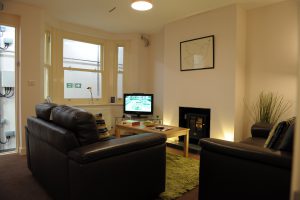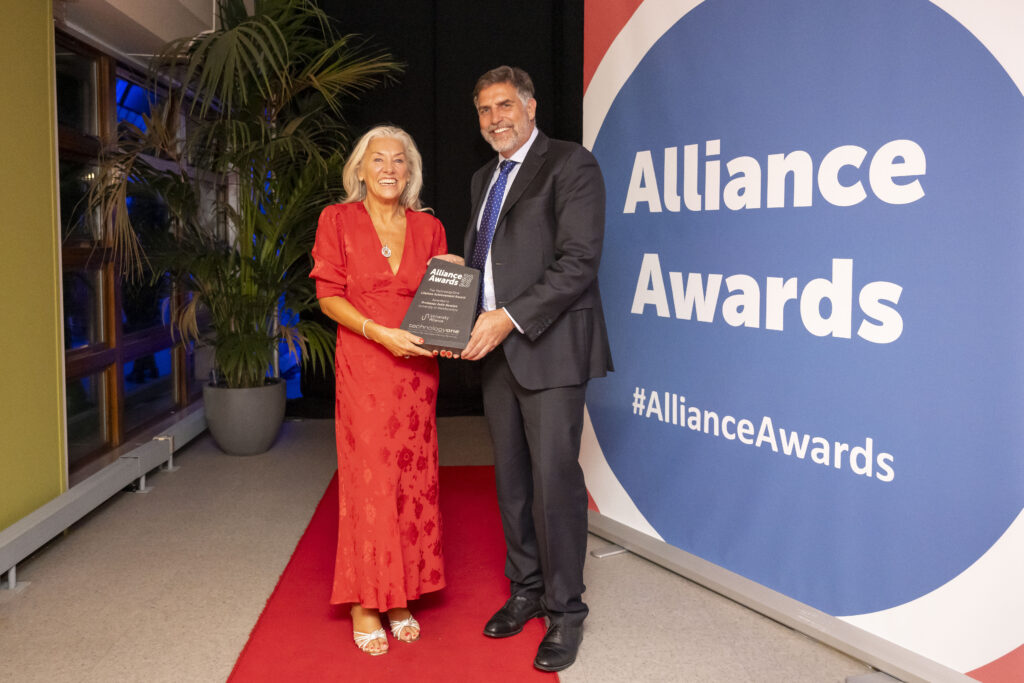 The Salford Energy House is the centerpiece of Salford University’s cross discipline Applied Buildings and Energy Research Group.
The Salford Energy House is the centerpiece of Salford University’s cross discipline Applied Buildings and Energy Research Group.
While it looks like an ordinary house, this is actually a unique testing asset. It is the only full-scale building in an environmental chamber in Europe, and the only full-scale brick-built test facility in a controlled environment in the world.
It has been designed and developed to allow leading academics and researchers to conduct scientific research, to improve the energy efficiency of hard to treat properties, in collaboration with industry.
 The Salford Energy House is uniquely able to provide quick and robust data to companies about the energy efficiency of their products. Testing in the field can be time consuming and costly. Field monitoring issues such as the impact of occupants, weather and other “noise” from the field means that robust studies can take three years to return useful data. Controlling the weather and using the capacity of the Salford Energy House to collect far more data than is possible in the field can compress these studies into a matter of weeks.
The Salford Energy House is uniquely able to provide quick and robust data to companies about the energy efficiency of their products. Testing in the field can be time consuming and costly. Field monitoring issues such as the impact of occupants, weather and other “noise” from the field means that robust studies can take three years to return useful data. Controlling the weather and using the capacity of the Salford Energy House to collect far more data than is possible in the field can compress these studies into a matter of weeks.
 The Salford Energy House team have been running projects since 2012, undertaking a number of world’s first in that time.
The Salford Energy House team have been running projects since 2012, undertaking a number of world’s first in that time.
- Saint Gobain, the world’s largest supplier of construction products, have conducted two full scale retrofits of the Energy House to understand how their products can help deliver comfort to occupants for substantive reductions in energy use – these two projects represented world’s firsts in terms of scale and ambition.
- The team has also worked with the BEAMA controls group, including companies such as Honeywell, Seimens and Danfoss, to understand the impact of controls. These unique experiments conducted over more than two years have identified greater than expected benefits for simple control systems, something that is absent in more than seven million homes in the UK.
- They also worked with smaller companies testing new products as they come to the market to help provide reliable evidence for their effectiveness. Radfan and Combi Save were both early successes for the facility, identifying measureable savings to allow not only the benchmarking of the products, but also allow them to use the information to refine their products.
One of the key elements of the facility that emerged over time is the capacity to validate methods for understanding the built environment. The team have been able to work with institutions both in the UK and EU to develop new methods and sensors to better measure in the field and within the house.
This unique facility sits at the centre of the buildings and energy work at the University of Salford, which includes work with Greater Manchester, local social housing providers, community groups, as well as major companies and UK and international academic partners. It is a major facility in helping us all understand how to ensure people have comfortable and energy efficient buildings, while at the same time addressing issues such as low carbon and the alleviation of fuel poverty.



